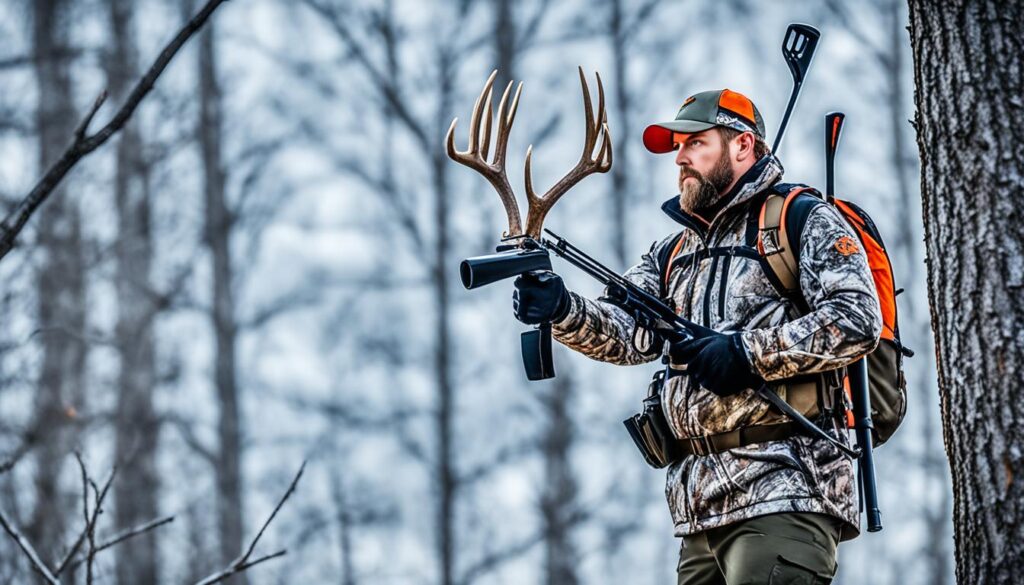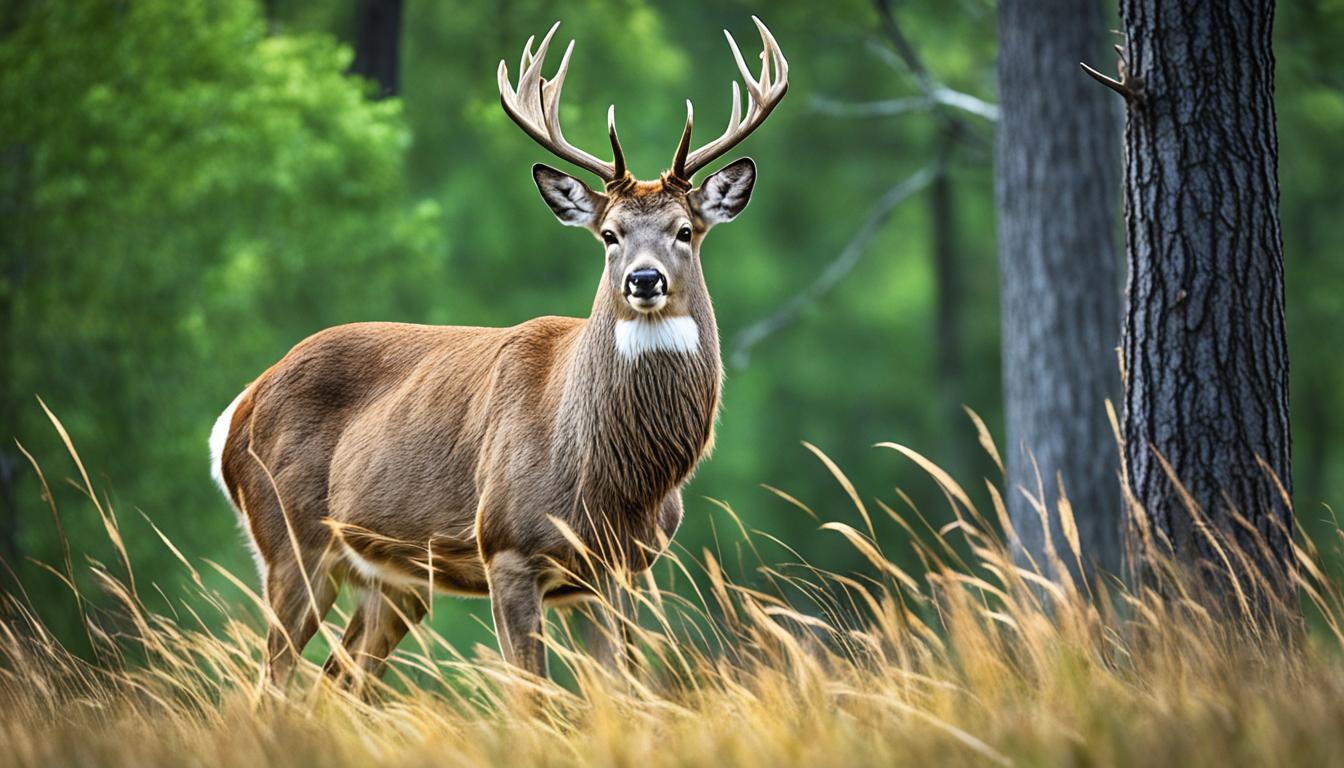When it comes to deer hunting, understanding the behavior of these elusive creatures is key to a successful hunt. One question that frequently arises among hunters is whether deer will move in the wind. To shed some light on this topic, let’s explore how wind affects deer movement and what insights we can gather from scientific studies and experienced hunters.
Content Highlights
ToggleKey Takeaways:
- Wind can influence deer movement patterns, with studies indicating that deer, especially bucks, are more active on windy days.
- Deer may move less during windy nights as the wind hampers their ability to detect potential predators.
- Wind direction plays a role, as moderate wind increases deer’s scenting distance and may lead them to cruise downwind edges of brushy areas.
- Strategic planning, utilizing wind data, and considering past behaviors can help predict and plan successful hunts on windy days.
- Hunting in lower and more covered areas, paying attention to wind direction, and practicing proper scent control are recommended tactics for hunting deer in windy weather.
Hunting Deer in Windy Weather: Tips and Challenges
Hunting deer in windy weather can present both advantages and challenges. The wind can have a significant impact on deer behavior, influencing their movement patterns and ability to detect human presence. Understanding these dynamics and adapting your hunting strategies accordingly can greatly increase your chances of a successful hunt.
One of the advantages of hunting in windy conditions is that the deer’s sense of smell is diminished. The wind disperses scents, making it harder for deer to detect the human odor. This gives hunters an opportunity to get closer to their targets without being detected.
Furthermore, the movement of leaves and branches caused by the wind can provide better camouflage for hunters. This natural movement can help conceal your presence and make it more difficult for deer to spot you in ground blinds or tree stands.
However, hunting deer in the wind also presents challenges. Windy conditions can make it more difficult to spot deer as they may choose to bed down and move less. The rustling leaves and branches also make it harder to hear any approaching deer. It is crucial to remain quiet and patient, as any noise can alert deer to your presence.
When hunting deer in the wind, paying attention to wind direction is essential. Position yourself downwind from the deer, so your scent is carried away from them. This will help prevent deer from detecting your presence and increase your chances of a successful shot.
Additionally, it is advisable to hunt in lower and more covered areas on windy days. Deer tend to seek shelter from the wind, so focusing on these areas can increase the likelihood of encountering deer. Monitoring temperature and thermal conditions can also provide insights into optimal hunting times in windy weather.
Summary: Hunting deer in windy weather offers advantages such as diminished scent detection and improved camouflage. However, it also poses challenges in spotting and approaching deer. By adapting your hunting strategies, paying attention to wind direction, and hunting in strategic locations, you can use the wind to your advantage and increase your chances of a successful hunt.

Stay tuned for the next section, where we will explore the importance of wind in whitetail hunting and how it can be used as a hunting strategy.
The Importance of Wind in Whitetail Hunting
Wind is a critical factor to consider when hunting whitetail deer. Understanding its effect on deer behavior is essential for a successful hunt. Scientific studies from Penn State University reveal that wind speeds can significantly influence whitetail movement. In particular, bucks tend to be more active on windy days, while deer may exhibit less movement in specific hunting areas.
It is important to note that personal observations from experienced hunters may vary from scientific data. Real-world experience and observations provide valuable insights that cannot be captured by data alone. Seasoned hunters often keep a hunting journal to record weather conditions, wind speeds, and hunting outcomes. This allows them to identify patterns and adjust their strategies accordingly.
Incorporating wind patterns into hunting strategies is key to maximizing success. Choosing hunting locations strategically based on wind direction and paying close attention to scent control can greatly impact the likelihood of a successful hunt. By combining scientific knowledge and personal observations, hunters can effectively utilize wind patterns and increase their chances of success in whitetail hunting.
Observation and experience have shown that hunting whitetail deer involves understanding the importance of wind. Success in hunting depends on strategic planning, adapting to wind patterns, and utilizing personal insights gained from real-world observation. By considering wind’s effect on deer behavior and incorporating it into hunting strategies, hunters can improve their chances of a successful hunt.

| Wind Patterns | Impact on Deer Behavior |
|---|---|
| Strong winds | Bucks tend to be more active |
| Decreased wind speeds | Deer may exhibit less movement |
| Wind direction | Choosing hunting locations strategically |
| Scent control | Minimizing the chances of being detected |
Conclusion
The question of whether deer move in the wind has been answered through a comprehensive analysis of scientific data and real-world observations. While studies indicate that deer, particularly bucks, exhibit increased activity during windy conditions, it is important to acknowledge that personal experiences may vary among hunters. Various factors, such as wind speed, direction, and location, can significantly influence deer movement and behavior.
To maximize hunting success in windy weather, it is crucial for hunters to stay informed about wind patterns and utilize this knowledge to their advantage. Monitoring wind direction allows hunters to position themselves strategically and increase their chances of encountering deer. Additionally, selecting suitable hunting locations where deer seek shelter from the wind can be a fruitful strategy. Effective scent control is essential to prevent deer from detecting human presence and evading potential threats.
By combining scientific knowledge with personal observations, hunters can adapt and refine their strategies to successfully hunt deer in the wind. Understanding the wind’s impact on deer behavior and employing the right techniques, including monitoring wind patterns, selecting strategic locations, and practicing scent control, can greatly increase the likelihood of a fruitful hunt. Stay informed, make mindful decisions, and leverage the wind to your advantage to experience successful hunting in windy weather conditions.
- California Deer Hunting Guide: Seasons, Rules, Permits, and More - 26 June 2024
- Arkansas Deer Season 2024 [Schedules, Licenses, Bag Limits & More!] - 26 June 2024
- 2024 Arizona Deer Season New Dates & Rules! - 25 June 2024




